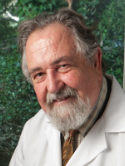Antibody mass escalation study in patients with castration-resistant prostate cancer using 111In-J591: Lesion detectability and dosimetric projections for 90Y radioimmunotherapy Journal Article
| Authors: | Pandit-Taskar, N.; O'Donoghue, J. A.; Morris, M. J.; Wills, E. A.; Schwartz, L. H.; Gonen, M.; Scher, H. I.; Larson, S. M.; Divgi, C. R. |
| Article Title: | Antibody mass escalation study in patients with castration-resistant prostate cancer using 111In-J591: Lesion detectability and dosimetric projections for 90Y radioimmunotherapy |
| Abstract: | J591, a monoclonal antibody that targets the external domain of the prostate-specific membrane antigen, has potential as an agent for radioimmunotherapy. A pilot trial was performed in patients with prostate cancer using repetitive administrations of escalating masses of J591. An analysis was performed to assess lesion detectability by 111In-J591 γ-camera imaging compared with standard imaging methods and the effect of increasing antibody mass on lesion detectability, biodistribution, and dosimetry. Methods: Fourteen patients with metastatic prostate cancer received escalating amounts (10, 25, 50, and 100 mg) of J591 in a series of administrations each separated by 3 wk. All antibody administrations included a fixed amount of the radiolabeled antibody 111In-1,4,7,10-tetraazacyclododecane-N, N′,N″,N‴-tetraacetic acid-J591 (111In-DOTA-J591) (2 mg of J591 labeled with 185 MBq [5 mCi] of 111In via the chelating agent DOTA). Three whole-body g-camera scans with at least 1 SPECT scan together with multiple whole-body counting-rate measurements and serum activity-concentration measurements were obtained in all patients. Images were analyzed for distribution and lesion targeting. Estimates of clearance rates and liver and lesion uptake were made for each treatment cycle. These estimates were used to generate dosimetric projections for radioimmunotherapy with 90Y-labeled J591. Results: A total of 80 lesions in 14 patients were detected. Both skeletal and soft-tissue diseases were targeted by the antibody as seen on 111In-J591 scans. The antibody localized to 93.7% of skeletal lesions detected by conventional imaging. Clearance of radioactivity from the whole body, serum, and liver was dependent on antibody mass. Normalized average values of the ratio of residence times between lesion and liver for 10, 25, 50, and 100 mg of antibody were 1.0, 1.9, 3.2, and 4.0. Dosimetric projections for radioimmunotherapy with 90Y-labeled J591 suggested similar absorbed doses to lesions for treatment at the maximally tolerated activity (MTA), irrespective of antibody mass. However, absorbed doses to liver at the MTA would be antibody mass-dependent with estimates of 20, 10, 7, and 5 Gy for 10, 25, 50, and 100 mg of J591. Conclusion: The proportion of the amount of antibody increased in lesions and decreased in the liver with increasing mass of administered antibody up to a dose of 50 mg. Proportional hepatic uptake continued to decrease with increasing antibody mass up to 100 mg. The optimal antibody mass for radioimmunotherapy would therefore appear to be greater than or equal to 50 mg. Copyright © 2008 by the Society of Nuclear Medicine, Inc. |
| Keywords: | clinical article; controlled study; bone neoplasms; radiation dose; lymphatic metastasis; radiopharmaceuticals; metastasis; computer assisted tomography; image analysis; radiotherapy dosage; drug dose escalation; prostate cancer; prostate-specific antigen; prostatic neoplasms; bone lesion; monoclonal antibody j591; antibodies, monoclonal; indium radioisotopes; drug uptake; isotope labeling; whole body imaging; feasibility studies; pilot projects; dosimetry; drug clearance; castration; orchiectomy; radioimmunotherapy; single photon emission computer tomography; indium 111; 1,4,7,10 tetraazacyclododecane 1,4,7,10 tetraacetic acid; glutamate carboxypeptidase ii; antigens, surface; tomography, emission-computed, single-photon; yttrium 90; scintillation camera; j591 antibody |
| Journal Title: | Journal of Nuclear Medicine |
| Volume: | 49 |
| Issue: | 7 |
| ISSN: | 0161-5505 |
| Publisher: | Society of Nuclear Medicine |
| Date Published: | 2008-07-01 |
| Start Page: | 1066 |
| End Page: | 1074 |
| Language: | English |
| DOI: | 10.2967/jnumed.107.049502 |
| PUBMED: | 18552139 |
| PROVIDER: | scopus |
| PMCID: | PMC2766795 |
| DOI/URL: | |
| Notes: | --- - "Cited By (since 1996): 17" - "Export Date: 17 November 2011" - "CODEN: JNMEA" - "Source: Scopus" |
Altmetric
Citation Impact
BMJ Impact Analytics
MSK Authors
-
 163
163Divgi -
 588
588Morris -
 1041
1041Gonen -
 313
313Schwartz -
 349
349Pandit-Taskar -
 151
151O'Donoghue -
 962
962Larson -
 1133
1133Scher
Related MSK Work



